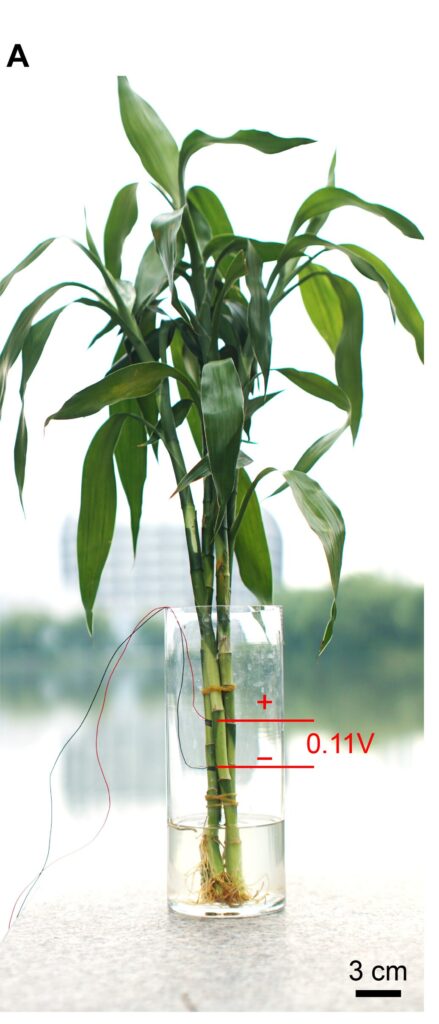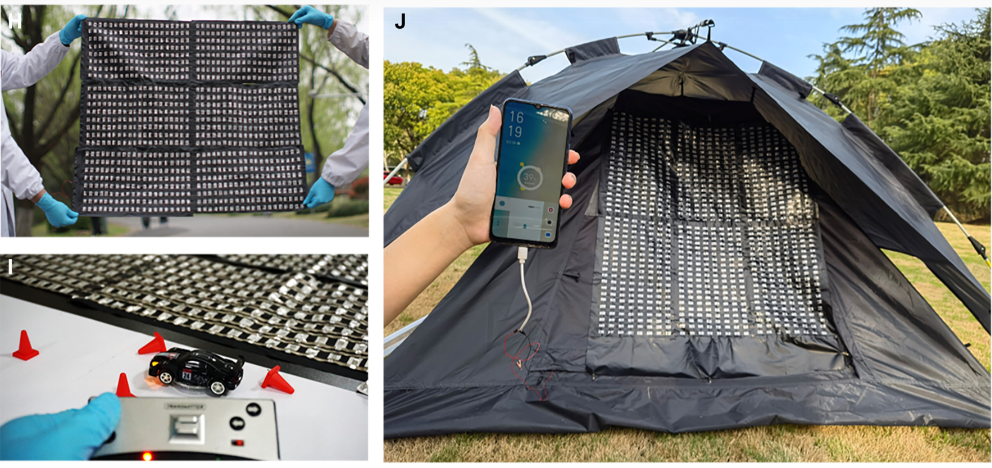Electricity is generated through plant transpiration flow.
Plants draw water up from their roots, and the driving force behind this is transpiration that occurs in the above-ground parts. When transpiration happens, it causes a flow of water to replenish the lost moisture, leading to water absorption from the roots. During this process, the water flowing through the plant carries various substances. A major component of the plant structure is cellulose, which tends to carry a negative charge, and the water flowing through the cellulose tends to acquire a positive charge. This potential difference becomes the electric current generated during transpiration.
Hence, with the generation of electric current, the thought arises, “Can this plant transpiration mechanism be used for power generation?” leading to reported research on new power-generating devices.

A structure mimicking the plant’s power generation mechanism (MAC Fabric)
We have described a rough system where a potential difference is created inside the plant. What’s important is the flow of water. A structure named “MAC Fabric,” which mimics this, has been developed. When one side of the plate-like MAC Fabric evaporates moisture, it creates negative pressure, causing water to be absorbed from the opposite side, generating a water flow within the structure. To achieve this, the moisture-absorbing side is made with a rough structure, and the evaporating side with a finer structure. Additionally, the moisture-absorbing side is made of hydrophilic materials, actively capturing moisture from the air. In contrast, the transpiration side is made of components that repel water, thus facilitating active transpiration. While there are many other innovations, the basic structure was as described.

Charging of Electronic Devices is Possible
So, how much power can the developed MAC Fabric generate? The mass-produced MAC Fabric has a very small structure, only a few centimeters in size. These are connected to generate a higher output. As a result, it was possible to charge a smartphone with MAC Fabric spread over approximately one square meter. Like solar panels, it seems to be a good power source that can be taken outdoors. The power generation of the MAC Fabric increases with faster transpiration rates, so, like solar panels, the output is larger when the weather is good. However, even when it is cloudy, if the surroundings are dry, transpiration proceeds sufficiently, resulting in stable output. Further research may lead to an even more efficient power-generating tool.

Development of a New Energy Source through Biomimicry
The field of power generation using transpiration is still in the early stages of research. By revising the components used in the structure, efficiency could improve, and it might become integrated into our lives like solar panels.
I have previously introduced a paper on biomimicry. There are many unexplored aspects of biological structures and systems. Unraveling and utilizing these could improve our lives significantly.
In the near future, we might see curtains starting to generate power.



コメント